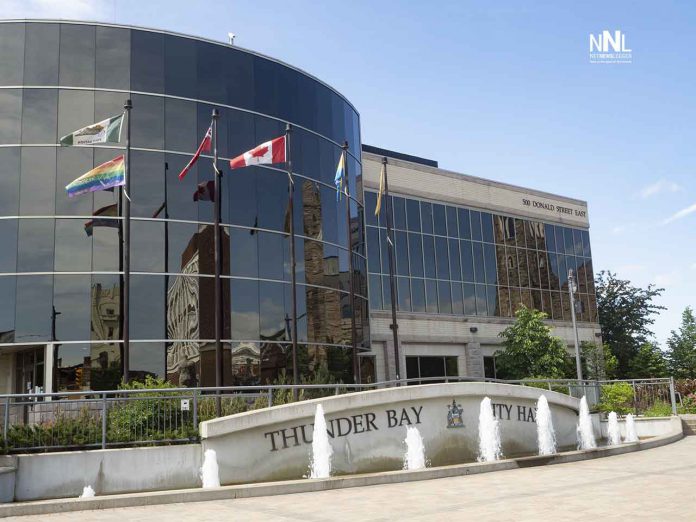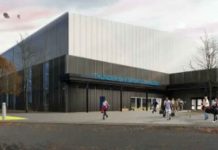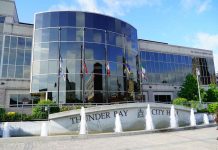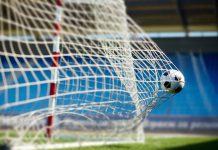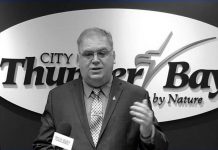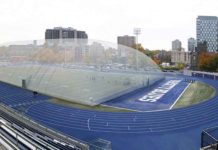THUNDER BAY – CIVIC – There is change afoot in Thunder Bay with regard to the indoor turf facility. City Administration is now recommending that the decision to build the indoor turf facility be deferred.
City Manager Norm Gale in a memo to Council writes, “As per Report 83/2020 (July 27 Committee of the Whole)- Financial Implications of COVID-19 Pandemic & Budget Variance Report #2, Administration is forecasting a $7 million tax supported pressure until year end 2020 based on the status of COVID-19 reopenings until July 13/20. This estimate does not include the reopening of Churchill Pool (August 4th), Current River Arena (August 24 – financial impacts unknown), and the financial impacts associated with the potential reopening of other aquatic venues (Canada Games Complex, Volunteer Pool), arenas, and school based child care programs.
To date, there is no confirmation of external funding to support the project. The Grant Thornton Program and Services Review Phase II Report has recommended the rationalization of various City owned facilities and financial prudence in respect of developing new facilities in the COVID- 19 context.
As Administration continues to develop reopening plans in an environment of changing regulation, inspite of some lessening of restrictions, net revenue losses/additional costs, in some cases significant, continue to be evident for fall 2020 and into 2021 and potentially 2022.
Uncertainty regarding the City’s future financial position due to COVID-19 and any financial relief that may be forthcoming from other levels of government is unknown. Although we know that both levels of government will provide financial support for our operating deficits, we don’t yet know to what degree and for what programs, nor what will be required to access this relief funding. Further, we don’t know whether we’ll get such support for the 2021 budget. Therefore we have low confidence in what our future operating budgets will look like.
This recommendation to refer a decision regarding source of financing and the tender for construction is not based on merits of the project. In my view, the project is well conceived, and Council, Council’s Special Purpose Committee and Administration have been thoughtful and duly diligent so that a fine project is shaping up.”
On July 20th, Report No. 74/2020 was presented to Committee of the Whole as a First report. The report provided both a financing recommendation and a recommendation to proceed to tendering the project to continue the advancement of a new Multi Use Indoor Sports Facility.
As part of the First Report process, Council is given the opportunity seek clarification of thereport contents and seek additional information, this memo provides a response to the comments received at the July 20th Committee of the Whole meeting.
Although Councillors all had questions, common themes were apparent, this memo will address the comments Administration were not able to respond to on July 20th.
Business Case
Proposed Outcomes:
The proposed multi-use sports facility, to be located in Chapples Park, offers a long term, sustainable, flexible building solution that will include the following key components:
- Indoor synthetic turf field 310’ x 190’, min 40’ clear height (150’ x 90’ quarter pitch)
- Turf dressing rooms (8), referee change area, multi-purpose change room
- Indoor walking track (main level)
- Multi-purpose rooms (1,000 sq. ft., dividable into 2 separate rooms)
- First Aid Room
- Concession
- Client Service/Facility Control Access
- Mechanical/Electrical rooms
- Public lobby/entrance/washrooms
- Administrative space (facility staff and shared access user group administrative space
- Mezzanine viewing area (capacity 800)
- Storage space (including opportunity for limited, exclusive, onsite equipment storage for rent to user groups)
- Automatic quarter pitch field separation curtains
- Playing field accessories
- Full load building generator
- Exterior access door to the field for future programming
- Pedestrian connectivity
- Transit and vehicular circulation (includes the extension of two way traffic on Chapples Park Way)
- Parking
- Landscaping
- Integration with existing and future planned Chapples park
The primary purpose of the proposed facility is to address a current service gap that has existed since late 2016 for approximately 6,600+ turf users (soccer, football – flag, touch, tackle, Ultimate Frisbee, cricket, lacrosse, baseball, rugby)– current members/registered participants of 15+ key end user groups. Other beneficiaries will include students of local school boards, including Indigenous high schools, and post-secondary institutions, the general public using Chapples Park, individuals/groups interested in indoor walking, summer/multi-sport camp participants, participants of fitness/wellness programs and community meetings that can be accommodated through multi-purpose space, visitors attending sport, cultural events and potentially future trade shows.
Other project objectives include:
- advance the Chapples Park Master Plan (R48 2017) which supported the development of a multi- use indoor sports hub at this site as a phase 2/medium term priority (6 to 10 years)
- increase tourism and the economic benefits to Thunder Bay
- retain existing/attract new talent and population growth to Thunder Bay by offering quality sport/recreation facilities that are responsive to the needs/preferences of the existing population and align well with the same of new Canadians, immigrants, and our growing Indigenous population
- ensure Thunder Bay is competitive with other Canadian cities by providingrecreation/sport infrastructure responsive to the an increasingly diverse population
- promote individual holistic health through increased opportunities for physical literacy,physical activity, social inclusion, confidence building and mental well-being through quality sport and cultural development programs
- foster city building, community pride
- develop Thunder Bay’s volunteer and event hosting
Economic Impacts:
The current Phase 1 Development/Detailed Design outcome will provide for Phase 2 tender ready construction documents of the proposed 127,000 gross square foot facility. Phase 1 is expected to be completed by October 2020 with $1.45 million direct spending in Thunder Bay CMA generating $2.13 million total employment income and 9.39 person years of employment.
In Phase II, the total project site work/construction, and Phase 1 costs are estimated to be
$33,643,500 (Class B estimate). This will result in over $22.5 million direct spending, generating over $33 million increased earned income/146 person years of employment in Thunder Bay CMA. Annually, facility operations and sport tourism will result in $1.33 million in direct spending;
$2.09 million increased earned income/15.37 full-time equivalent jobs in the Thunder Bay CMA. Potential end users of the proposed facility have identified 11 new events involving 33 event days that could be held between October to mid May annually. Total attendance,including accompanying persons, is expected to be 4,888 with 20% of event participants originating from outside of Thunder Bay (80+ km one way). Visitor spending in Thunder Bay is expected to be
$479,579; generating $795,142 increased earned income/5.11 full-time equivalent jobs in Thunder Bay CMA.
Improved Community Health Outcomes:
There is need for additional, year round access to indoor recreation facilities to support access for opportunities to become physically literate, more active and to support improved individualhealth outcomes. Most (94%) Thunder Bay adults do not meet the Canadian Physical Activity Guidelines of 150 minutes of moderate-to-vigorous physical activity per week. (Canadian Community Health Survey, 2017). Physical inactivity is a risk factor for developing chronic diseases, such as heart disease, diabetes, and some cancers. Adults in Thunder Bay experience chronic diseases and die from chronic diseases at higher rates than provincial averages. Some examples:
- In 2016, the prevalence of hypertension among Thunder Bay District Health Unit (TBDHU) adults was 276.9 per 1,000 people. (Provided by ICES; Ontario Hypertension Dataset(HYPER))
- In 2016, the prevalence of diabetes among TBDHU adults was 136.9 per 1,000 people. (Provided by ICES; Ontario Diabetes Dataset)
- From 2010-2013, the incidence of all malignant cancers among TBDHU adults was 674.2per 100,000 people. (Ontario Cancer Registry – Cancer Care Ontario)
- Mortality rate from cardiovascular disease is 198.3 per 100,000 in Thunder Bay compared to 170 per 100,000 provincially (Public Health Ontario, 2015)
- Mortality rate from cancer is 223.4 per 100,000 in Thunder Bay compared to 189.6 per 100,000 provincially (Public Health Ontario, 2015).
Obesity rates of adults in Thunder Bay are 32.2% compared to 26.5% provincially.
In 2015, the Early Development Instrument (EDI) data indicated that 23.8% of children in Thunder Bay were considered vulnerable in the domain of physical health and well-being (EDI Summary Report, District of Thunder Bay 2014/2015). This is higher than the provincial average of 16.1% of children considered vulnerable in the same domain.
Demand for Indoor Turf in Thunder Bay:
A recent survey in 2020 completed by administration concluded user demand exceeded the available supply during peak season, prime time. That exceedance was approximately 3,300 hours of ¼ field booking time.
The supply of peak season, prime time indoor turf is based on October to mid May, 32 weeks, Monday to Friday – 5:00 pm – 11:00 pm (last booking) and Saturday and Sunday, 8:00 am to 11:00 pm (last booking).
During the most recent engagement with key end users (20200, soccer groups represent 64% of demand during peak season, prime time, followed by football (13%) and Ultimate Frisbee (11%).
Demand during peak season, non-prime time is expected to be 2,630 of 5,760 hours of available ¼ field bookings, representing approximately 45% capacity.
Key users are older adults and students. Demand by turf user groups during off peak season is expected to be low as user groups head outdoors.
User Fees:
Administration conducted a benchmarking study in August 2019 of facility rental fees to access indoor turf. User fees vary based on dimension of playing surface, time of use (peak v. off peak/prime v. non-prime), and, in some instances, demographic profile of user group. This information assisted in projecting facility revenue generating potential. Below is a sample of facilities benchmarked and an extract of their fee schedule:
| Location | Playing Surface Dimension | Fee Category | Fee |
| Winnipeg (Winnipeg Soccer Federation North & South) | Full Field (210’ x 330’) | Peak Season/Prime Time | $630/hr (including taxes,
excluding extra fees) |
| 1/2 Field (156’ x 210’) | Peak Season/Prime Time | $315/hr (including taxes,
excluding extra fees) |
|
| ¼ Field (99’ x 156’) | Peak Season/Prime Time | $175/hr (including taxes,
excluding extra fees) |
|
| Off Peak Rate (eg
summer/weekday) |
$105 – $210/hr
(including taxes, excluding extra fees) |
||
| Brampton Soccer Centre | Full Field
(85’ x 200’) |
Prime | $256/hr (pre-HST) |
| Full Field
(85’ x 200’) |
Non-prime | $168.37/hr (pre-HST) | |
| Ontario Soccer Centre (Vaughan) | Full Field
(200’ x 300’) |
Peak Season/Prime
Time |
$620/hr (pre-HST) |
| 2/3 Field
(200’ x 200’) |
Peak Season/Prime
Time |
$440/hr (pre-HST) | |
| 1/3 Field (100’ x 200’) | Peak Season/Prime Time | $220/hr (pre-HST) | |
| 1/3 Field
(100’ x 200’) |
Peak Season/Non-
prime or Off Peak |
$120/hr (pre-HST) | |
| Carleton University Field House (Ottawa) | Full Field
(190’ x 160’) |
Peak Season/Prime
Time |
$324/hr (pre-HST) |
| ½ Field
(175’ x 95’) |
Peak Season/Prime
Time |
$186/hr (pre-HST) | |
| ½ Field
(175’ x 95’) |
Peak Season/Non-
prime |
$115/hr (pre-HST) | |
| Young’s Sportsplex (Welland) | Full Field
(200’ x 300’) |
Peak Season/Prime
Time |
$460/hr (pre-HST) |
| 1/3 Field
(100’ x 200’) |
Peak Season/Prime
Time |
$160/hr (pre-HST) | |
| 1/3 Field
(100’ x 200’) |
Peak Season/Non-
prime Time |
$80/hr (pre-HST) | |
| Northern Community | ½ Field | Peak Season/Prime | $123.87/hr (pre-HST) |
| Centre (Sault Ste. Marie) | (100’ x 100’) | Time | |
| ½ Field
(100’ x 100’) |
Peak Season/Non-
prime time |
$77.42/hr (pre-HST) |
Operating Estimates:
An analysis of revenue vs. expenses completed by Administration indicates the facility will be a cost neutral operation, and potentially provide a small surplus. Facility revenue is based primarily on field rental only. These operating estimates would not include the potential net program registration revenues associated with any programming that would be offered through proposed 1,000 sq. ft. (or 2 @ 500 sq. ft.) multi-purpose rooms or rental revenues associated with onsite equipment storage and administrative /commercial space for user groups.
Operating Model:
The Special Purpose Committee – Multi-use Indoor Sports Facility has yet to identify the preferred operating model for the facility.
Aside from direct delivery by the City, the following arrangements are the most common arrangements involving third parties:
- Strategic Alliance – a relationship that involves the municipality and one or more organizations collaborating on planning and delivering select facilities, services or
- Contract Agreement – services contracted by the municipality to a partner organization, whereby the contracting partner delivers a service consistent with a predetermined
- License or Lease Agreement – facilities rented by the municipality to a partner, where the licensee or leasee licenses or leases a public facility for its private and sometimes its exclusive use (although usually with provisos for public access guarantees).
- Service Agreement – services provided through an agreement between the municipality and one or more partner organizations, where services are jointly controlled, managed and operated by the partners as specified in an
A successful Invest in Canada Infrastructure Program (ICIP) Application, would restrict the potential operating model options available to Council – only a non-profit third party operator could be considered.
Program Development/Marketing Plan:
As based on current estimates by key end user groups for demand to indoor turf exceeding the available supply during peak season/prime time, continued engagement with key end users, the development of a turf allocation policy and proposed user fee schedule are key to addressing the key driver of revenue for the proposed facility.
There is a need for continued program development to finalize the proposed use of the facility during peak season, non-prime time and off peak season usage. Continued consultation with walking groups, older adult centre staff/older adults, Indigenous organizations, schools, the
Secondary School Sport and Athletic Association (SSSAA), and the post-secondary athletics/wellness programs will assist in refining the program plans during these times. Another opportunity would be to explore interest in corporate/industrial leagues.
The development of a more robust marketing plan could be undertaken once these additional program development/opportunities are addressed based on feedback from clients on their preferred information/communication channels and ability to pay for access to programs/services during these non-prime time/off peak times.
Project Risks:
Impacts of COVID-19
Recreation/sport facility closures and restricted capacities to achieve the necessary physical distancing in the event of a potential reopening of a facility have negatively affected access to many sport/fitness activities. As this facility is not expected to open until 2022, it is uncertain whether a successful vaccine will have been developed and distributed.
The Province’s current Stage 3 Framework for Reopening would restrict access to the indoor facility to up to 50 persons at a time for a specific area, subject to physical distancing and other restrictions on ‘league play’. While the dimensions of the proposed playing surface would have sufficient space to accommodate up to 50 persons at a time, this would represent approximately 40% to 60% of the normal capacity during peak season, prime time, assuming regular participation rates of 20 – 30 players per ¼ field at a time (80 – 120 for full field).
There are at least two potential outcomes: i) increased demand for access to indoor turf given restricted capacity; or ii) reduced demand for access to indoor turf because reduced capacities, with no change to user fees, results in increased cost to the individual user. As we are just in the process of reopening some recreation facilities, Administration will be monitoring impacts on demand and the associated financial implications.
Recent research studies (2020 ParticiPACTION Report Card on Physical Activity for Children and Youth) continue to highlight the pervasive link between physical activity and health among children and youth (5- to 17-year-olds). A recent study on the impacts of COVID-19 on the physical activity behavior and well being of Canadians generally indicated that 40% of inactive individuals were more likely to become less active; approximately 40% of active individuals became more active and 22% became less active (Lesser and Neinhaus, “The Impact of COVID- 19 on Physical Activity Behavior and Well-Being of Canadians”, International Journal of Environmental Research and Public Health, May 31, 2020).
Other Indoor Turf Development in Thunder Bay
Currently, there are limited options for access to indoor turf and/or to practice turf sports indoors in Thunder Bay. Key end users groups advise that there is limited access to the Lakehead University Hangar and available school gyms are unsafe for turf sports due to their limited size. Use of outdoor synthetic turf in winter conditions poses increased risk of slips/falls to users and damage to the turf.
Administration is aware of the potential development of an indoor turf facility to be located as part of a development at 1125 Golf Links Road (Report 173 2019). The proposed dimension of the playing surface as presented in Report 173 is 190’ x 150’ (full field) or 90’ x 150’ (1/2 field). This proposed playing surface dimension approximates half of the proposed size of the multi-use indoor sport playing surface or the equivalent of 2 quarter (1/4) field rentals. The development of a recreational facility of this size, combined with the proposed multi-use indoor sports facility, would increase the available supply of indoor turf during peak season, prime time to 12,744 1/4 field rentals, creating an excess supply of 960 ¼ field hours. (approximately 8% peak season, prime time demand).
While neither facility alone could adequately address all user demand during peak season, prime time, there would be some ‘softening’ of supply that could introduce increased financial risk to either operation, especially in the earlier years of operation. Media reports of the potential development of a second dome at 1125 Golf Links Road and/or other locations in the city would provide even greater over supply risk.
Should actual demand during peak season/prime time not be consistent with estimates acquired through end users or excess supply exist due to the development of the facility at 1125 Golf Links Road. The proposed facility design for the multi-use indoor sports facility could be adapted with a relatively modest investment to accommodate other non-turf flooring (ie sprung wood flooring) to support other community needs such as badminton or basketball. More research would be required to support the business case to accommodate the demand for these alternate uses
Hosting of Large Cultural Gatherings:
Opportunities for the facility to host large cultural gatherings during the off peak season (mid May to September) continue to be explored, but are not included in the current building program.
To facilitate these additional uses protective flooring and flooring storage is a requirement. There are different grades of protective flooring – pedestrian friendly through to vehicular friendly products. Preliminary research into the costing of protective flooring itself range in value from 150K (pedestrian traffic), to 650K (vehicular traffic). Cost estimates for storage range from 160K (detached onsite cold storage building) to 300K (added to proposed facility). There is currently no vacant Municipal space available to accommodate the storage of protective flooring. Additionally the installation/removal costs, hosting costs, and the limited demand received to date for the proposed facility to host these events, will require a business case to support hosting these events in the future.
General Questions:
The size of the elevator cab is 6’-8” long x 4’-3 1/2” wide with a 3’-6” clear opening on both short sides. The elevator buttons are adjacent to both opening at an accessible height and will be proud of the wall so they can be activated with a closed fist. The elevator can accommodate two wheelchairs and two companions (if required). Alternatively the elevator can also accommodate one motorized scooter and two companions (if required).There is also no need for scooters and wheelchairs to turn around in the elevator or reverse in / out as there are door openings on both sides that provide access straight through to the different levels.
The fall 2022 completion date is an estimation by Administration. Until the tenders are received, the actual construction time remains an estimate. Three principals, time, cost, and quality bind project management. One cannot be changed without affecting at least one of the others. In this case, an accelerated schedule will have an impact on cost, quality, or both.
Currently there are no letter of intents signed by potential user groups. A letter of intent would be somewhat premature at this stage since it is still unclear as to who would be operating the facility and who would be the most beneficial parties to these agreements. Letters of intent can also be viewed as non-binding and so there would be questions surrounding the enforceability and enforcement of such a document. There is also uncertainty at this time on whether a letter of intent would be useful or necessary in connection with any future grant or funding program.
Community Consultation & Engagement:
Consultation and Engagement Completed to date:
Attachment “A” summarizes community consultation and engagement regarding the development of a Multi-Use Indoor Sports Facility.
Fact Sheet:
In response to questions raised on Monday July 20th at COW when the first report was presented, a Fact Sheet has been developed and posted on the Get Involved web-site. Attachment ‘B’
Summary of Online Survey:
Four hundred and five (405) surveys were completed from July 6 – Aug 3, 2020. Demographics of the survey respondents can be viewed in Attachment -C. Full survey responses and all comments can be found in the attachment.
In review of the comments, four themes emerged and are summarized below;
- 23% of respondents clearly indicated they were not in favor of the project, rational ranged from, not needed, ongoing private development, infrastructure debt, and
- 35% of respondents clearly supported the project, rational range from longoverdue, satisfies a demand, and provides year round recreation activity.
- 27% of respondents clearly indicated this was not the time to proceed with theproject, rational ranged from COVID-19 implications on City finances, ongoing Program and Service review, infrastructure deficit, and no supplemental funding.
- 15% of respondents provided general comments on the project ranging from facility design, inclusion of tennis, location, financing, process, and the necessity of the project.

